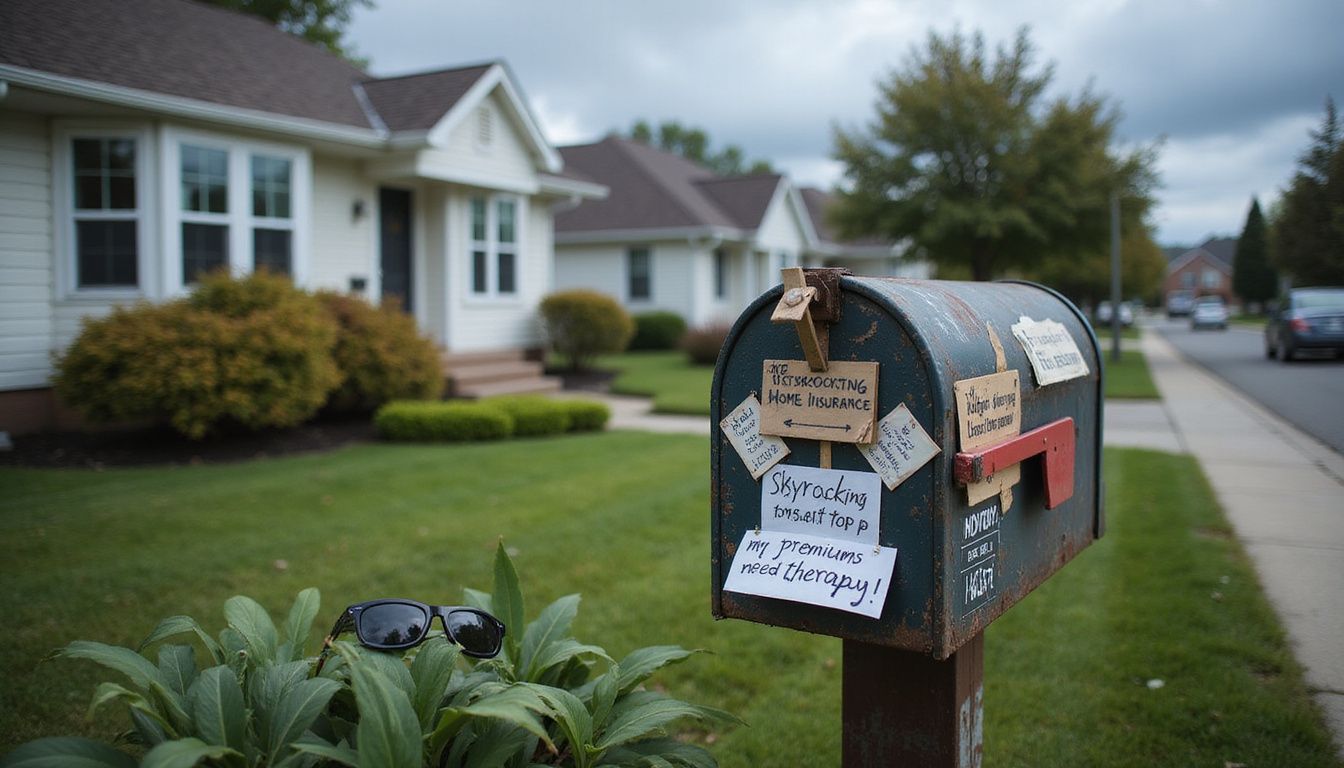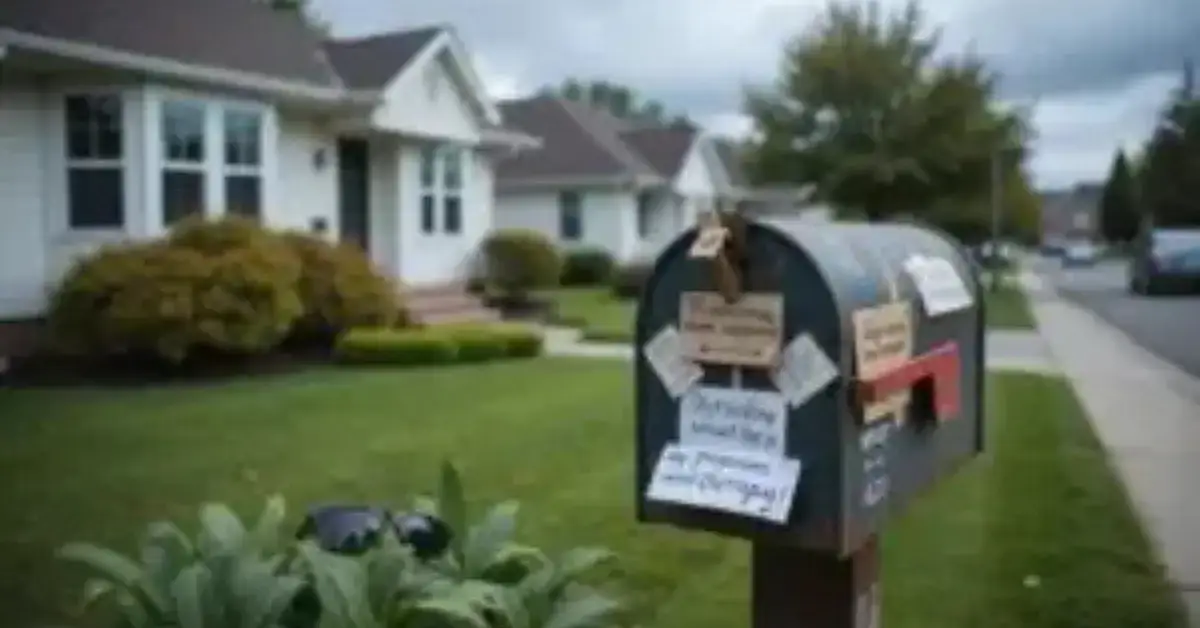
Understanding Home Insurance Cost Variation Across States 2025
- Finding the right Home Insurance Cost can be tough, especially when prices change so much by location. Maybe you’ve asked yourself why average Homeowners Insurance Rates By State can feel so random.
- Many homeowners struggle to figure out what makes their premium go up or down by hundreds of dollars.
- One fact stands out: The average annual cost of homeowners insurance in the U.S. sits between $1,500 and $2,000. Yet, your zip code could make a big difference in your bill—sometimes more than details about your home itself.
- In this blog post, we’ll explain why prices swing from state to state and even city to city within the same state. We’ll show how factors like weather risks or local laws affect costs and share tips on finding the best deals for you.
- Curious about what drives these numbers? Keep reading—you might save money just by learning more!
Key Takeaways
- Home insurance costs in the U.S. range from $1,500 to $2,000 per year on average, but can be as low as $632 in Hawaii or over $6,000 in Oklahoma due to weather and location risks.
- States like California face high premiums from wildfire threats; Florida and Texas have expensive rates due to hurricanes and storms.
- Urban areas usually pay higher home insurance than rural ones because of more crime and costly property values—premiums range from $1,500 (rural) to over $2,000 (urban).
- Premiums have risen fast recently: National rates jumped 11% in both 2023 and 2024; Arizona alone saw a 70% rise since 2018.
- You can lower costs by comparing quotes from at least three insurers, raising your deductible, bundling policies with companies like State Farm or Allstate, or improving home safety features like security systems and stronger roofs.
Factors Affecting Home Insurance Costs

Home insurance costs vary a lot from one place to another. Things like where you live, the type of house you have, and even local risks can change your rates. Safety features in your home might lower costs too… And, state rules play a big role in how much you’ll pay.
Location and geography
Areas with high risk for natural disasters often pay higher homeowners insurance premiums. For example, Sacramento, California faces wildfire threats and flooding hazards. Here, average premiums in 2024 can jump from $1,200 up to $2,200 or more by zip code depending on neighborhood risk levels.
Florida and Texas also show high home insurance costs due to hurricanes and severe storms.
Living near a coast or in tornado zones increases rates too. Insurers see these regions as “high-risk home insurance states.” A state-by-state home insurance comparison shows the cheapest home insurance by state 2024 is found inland where extreme weather is rare.
Property location shapes not just your cost but also what coverage you need—leading right into property characteristics that affect your premium next.
Property characteristics
Larger homes or those with custom features usually mean higher home insurance premiums. These houses cost more to rebuild if damaged, so insurers charge more. A big kitchen upgrade, a fancy deck, or other special touches drive up the price tag for coverage.
Older properties also see higher rates, especially if they have outdated wiring or plumbing that could spark fires or leaks.
Insurance companies check your roof’s age and materials too. A newer roof can lower your premium since it handles storms better. Pools and trampolines might seem fun but raise risk and costs.
Insurers want to know what shape the house is in before setting prices by zip code—this info helps you find the best home insurance rates by state using tools like a homeowners insurance premium calculator.
Home size matters; older systems push premiums up.
Risk factors come next—let’s see how weather and crime play into the average home insurance cost by zip code.
Risk factors (weather, crime rates)
Living in areas with frequent wildfires, hurricanes, or floods can raise your homeowners insurance premiums. For example, Florida and Louisiana often have some of the highest average home insurance cost by zip code because of repeated hurricane risks.
Also, places like California face expensive policies due to wildfire exposure. Insurance carriers label these as high-risk home insurance states.
Homes in neighborhoods with higher crime rates usually pay more for coverage too. If you live far from a fire station or hydrant, your costs may also rise since it’s harder to protect property quickly.
When searching for the best home insurance rates by state or using a homeowners insurance premium calculator online, you’ll notice big differences tied to risk factors like weather events and local crime numbers.
State regulations
State regulations play a big role in home insurance costs. Each state has its own rules that affect how much you pay for coverage. These rules can include what types of policies are allowed and how claims are handled.
For example, Arizona has seen a 70% rise in home insurance rates over six years, making it the fourth highest state for rate increases. Understanding your state’s regulations can help you find the best home insurance rates by state or even the cheapest home insurance by state 2024.
State laws impact ZIP codes and claims history too, adding to the variation across regions.
State-by-State Comparison of Home Insurance Costs
When you look at home insurance costs, different states show big differences. Some places are cheaper to insure than others. For example, urban areas often have higher rates compared to rural ones.
This can change over time too, as trends shift in each state. Want to know more about how these costs stack up? Keep reading!
Average costs by state
Homeowners insurance rates look very different depending on where you live. Take a look at these averages, and see just how much the numbers can change across the United States.
| State | Average Annual Cost (USD) | Notable Factors |
| Hawaii | $632 | Lowest in the nation; mild weather; fewer severe storms |
| California | $1,260 | Wildfire risk, earthquake exclusions, moderate pricing |
| Vermont | $1,339 | Low crime, limited severe weather |
| Oklahoma | $6,133 | Highest cost; frequent tornadoes, hail storms, wind damage |
| Nebraska | $5,912 | Severe weather, high risk of hail and wind |
| National Average | $1,500 – $2,000 | Average range; covers most states |
Urban and rural locations bring more changes to these averages, so next, let’s take a closer look at how geography shapes the bill.
Urban vs. rural cost differences
Shifting focus from average state costs, it’s clear that where you live—urban city center or a rural town—can seriously impact what you pay for homeowners insurance. See how these differences stack up below:
| Factor | Urban Areas | Rural Areas |
|---|---|---|
| Average Annual Premium | $1,800 – $2,000 Higher in neighborhoods with high crime rates or major weather risks | $1,500 – $1,700 Lower due to fewer claims and less crime |
| Proximity to Hazards | Close to theft and burglary risks, more likely to face issues from vandalism | Farther from major crime centers, fewer break-ins reported |
| Property Value & Construction | Higher home values, expensive to rebuild or repair | Lower property prices, less costly materials, simpler construction |
| Claims History Impact | Frequent claims can push up premiums, especially in high-risk zip codes | Fewer claims lead to more stable premiums year over year |
| Neighborhood Risk Factors | Big differences block to block, sometimes even within the same city (think: Brooklyn vs. Lower Manhattan) | Fewer large swings in risk, premiums steadier across broader areas |
| Insurance Provider Options | More providers, but also more variability in cost | Fewer insurers, but often more predictable rates |
Trends over time
Home insurance costs have shifted dramatically in recent years, with premiums climbing fast across the country. Here’s a snapshot of how rates have changed from 2019 to 2024, with Arizona standing out for its sharp increase.
| Year | National Rate Increase (%) | Arizona Rate Increase (%) | Key Notes |
|---|---|---|---|
| 2019 | 2.0 | N/A | Rates start rising slowly nationwide |
| 2020 | 2.1 | N/A | Small uptick, steady growth across states |
| 2021 | 3.0 | N/A | Growth speeds up for many homeowners |
| 2022 | 5.4 | N/A | Severe weather and claims push numbers up |
| 2023 | 11.0 | 57 (since 2019) | Sharp national spike, Arizona sees steep rise |
| 2024 | 11.4 | 70 (since 2018), 13 (since 2023) | Record pace, Arizona hits highest jump in six years |
Insurance providers like State Farm and Allstate have adapted pricing models to respond to more frequent severe weather, higher rebuilding costs, and bigger claims. Weather events and natural disasters have played a huge role, especially in states like Arizona, Texas, and Florida. Policyholders in cities and rural areas both feel the impact, though location often shapes individual rates. Rate tracking platforms and comparison websites help homeowners stay up to date with changing trends.
Up next, see how these changes play out across different states and what urban, suburban, and rural homeowners can expect in 2024.
Tips for Managing and Reducing Home Insurance Costs
Lowering your home insurance costs involves obtaining quotes from different companies. You can also raise your deductible; this means you pay more out of pocket when a claim occurs, but you’ll save money on your premiums.
Get quotes from multiple providers
Getting quotes from different providers is a smart move. It helps you find the best home insurance rates by state.
- Compare prices from at least three insurance companies. This gives you a good idea of the market rate in your area.
- Look for local agents and online options. An independent insurance agent can help you see multiple quotes easily.
- Consider using a homeowners insurance premium calculator. These tools help estimate costs based on your needs and location.
- Understand what each quote covers. Don’t just look at the price; check the details, like deductibles and included coverage.
- Check for discounts that may apply to you. Many insurers offer savings based on factors like safety features or bundling policies.
- Revisit your quotes annually to avoid overpaying. Rates can change, so regular reviews keep your costs in check.
- Insurance prices vary by zip code and state, so be aware of how your location affects rates, especially if you’re shopping for cheap home insurance by state 2024.
Finding affordable home insurance does not have to be hard if you know where to start!
Increase deductible
Increasing your deductible can help lower your home insurance premium. A higher deductible means you pay more out of pocket for any claims. Common options include $500, $1,000, or even $2,500.
For many homeowners, this can lead to significant savings over time.
If you find yourself in a low-risk area or if your home has safety features, raising the deductible may be an easy choice. Fewer claims mean that insurance companies see you as less risky.
Always weigh the potential savings against what you might pay during a claim to make the best choice for your situation.
Bundle policies for discounts
Combining home and auto insurance can save you money. Many insurers offer discounts for multi-policy plans. Companies like Allstate, Geico, and State Farm are excellent options to consider.
These discounts lower your overall premium costs. You can often get better rates when you combine different types of coverage.
Many homeowners find this approach very beneficial in reducing their expenses. It’s a smart choice if you’re searching for affordable home insurance rates by state or the cheapest home insurance by state 2024.
You simplify your payments and enjoy peace of mind knowing everything is under one roof!
Consider safety and resilience improvements
Safety and resilience improvements can help you lower your home insurance costs. These upgrades reduce risks and make your home safer.
- Install security systems. Having alarms or cameras can deter crime, making your home less risky.
- Upgrade smoke detectors. Modern detectors can alert you to fires faster, reducing damage and insurance claims.
- Add storm shutters or reinforced windows. These features protect against severe weather, which can lower premiums in high-risk areas.
- Improve electrical systems. Updating old wiring reduces the chance of fires or malfunctions, thus lowering risk ratings.
- Maintain plumbing systems. Fixing leaks prevents water damage and mold issues, which helps keep coverage costs down.
- Invest in a new roof if needed. A strong roof protects against weather damage; insurers appreciate this commitment to upkeep.
- Use fire-resistant building materials for repairs or renovations. This choice can lead to discounts on your homeowners insurance premium.
- Create defensible space around your property if you live near woods or brushlands. Clearing vegetation reduces wildfire risk, which some providers reward with lower rates.
These changes enhance safety and can lead to better home insurance rates by state, especially in high-risk areas like California or Florida where dangers are higher than average.
Conclusion
Home insurance costs vary widely across the United States. Factors like your home’s location and features can affect premiums. Higher crime rates or bad weather also raise costs. You can manage these expenses by getting quotes from different companies, bundling policies, or increasing your deductible.
Many states offer discounts for safe homes or loyal customers; take advantage of those when you can! Understanding home insurance helps you make smart choices that save money over time—so don’t hesitate to explore all options available to you!
FAQs
Why do home insurance costs vary so much from state to state?
Home insurance rates change by state due to risks like weather, property taxes, and local laws. High-risk states often see higher premiums. Insurance companies also check your credit scores and history before setting your rate.
What are the best ways to find the cheapest home insurance by state in 2024?
Start with a state-by-state home insurance comparison using online tools or a homeowners insurance premium calculator. Compare offers from top insurers in your area for the best home insurance rates by state.
Which states have the most affordable home insurance?
The most affordable states for home insurance usually face fewer natural disasters and lower rebuilding costs. States without flood risk or wildfire danger tend to offer cheaper policies.
How can I lower my home insurance premiums based on where I live?
You can ask about home insurance discounts by location, improve your credit score, bundle car and homeowners coverage, or raise your deductible. Working with an experienced broker may help you spot savings specific to your zip code.
Why is home insurance so expensive in some places like California or Florida?
High-risk areas such as California face wildfires while Florida sees hurricanes; these dangers drive up average costs by zip code each year due to more claims and bigger losses for insurers.
Does flood coverage affect how much my policy will cost compared to regular homeowner’s protection?
Yes, adding flood coverage increases total expenses since standard plans rarely cover floods; compare flood vs. regular policy prices across different locations using a reliable calculator before buying extra protection for high-risk areas.









1y81bm
7nkgff
59zoqh